A fishing village that the Portuguese took over in the 16th century, which then went to the Dutch in the 17th century only to change ownership once again, this time to British in the 18th century, Fort Kochi, without doubt, was an important region for trade in the pre-colonial and colonial days. It is then, but natural, that these different stages of history would have left layers of story to regale the present generation with. Unfortunately, a lot has been lost to the present day drive for ‘development’. Which is why, despite the thick cover of trees in Fort Kochi, you will find pockets that have retained the look and feel of the old world, while there are parts that have fallen prey to commercialisation. Sad. But then, all of India is reeling under the same problem. Our governments are not doing enough to protect its rich heritage, earmark areas that commercialisation shouldn’t touch….
A very relevant concern, for the sake of this post, let’s keep aside this sob story. And see how to make the most of what is still there.
St Francis Church, probably the most popular representative of Fort Kochi, has seen it all – the power struggles, the change of guards, the changing times. The oldest European Church in India, the St Francis Church was built by Vasco da Gama and others who had first come to India from Europe via the sea route. He was even buried here for around 14 years. Wonderful piece of history for little children as well as us, elders.
The Santa Cruz Basilica, built by the Portuguese, is another piece of art and architecture. Built by the Portuguese in Gothic style, the place was undergoing large-scale restoration when we went.
The Chinese Fishing Nets is, without mincing words, a farce! Although they catch fishes in the morning and offer to cook the fresh catch for you at the adjacent shacks, it isn’t worth the experience. The place swarms with vendors selling food and wares, is pretty noisy and crowded, and not very clean too. We hurried away from there….
Unfortunately, the Paradesi Synagogue was closed the day we went. And thus missed going inside what is considered to be the oldest active synagogue in the Commenwealth of Nations. Instead, we walk around the Jew town for a while, which have been mostly taken over by shops selling curios, old pieces of furniture and handicrafts.
Next in line is the Mattencherry Palace, also known as the Dutch Palace. Turned into a museum now, while its grounds are quite unkempt, the museum inside gives a rich insight into the life and times of the age in which it was built. Though well-kept with exhibits and narrations everywhere, don’t expect a magnificent piece of architecture…the Palace looks very modest from outside. Has a Hindu temple in its courtyard dedicated to the Goddess of the Kochi family. Outside too there is a temple, that is extremely strict with who it will allow inside!
Tips for Fort Kochi tour:
- Plan to go to Fort Kochi in the morning or a couple of hours before sundown. That’s because, it can get really hot and sultry during the day/noon
- Try to mostly walk. That way, you get a good feel of the place. But keep your cab handy, since the above places are scattered and quite a few roads are one way.
- Do dine at the Fort House Restaurant….they are known for their food and have an amazing location. Read about it here — Fort House Restaurant in Fort Kochi
P.S: Need help to plan a roadtrip in Kerala? Read this post for itinerary, food and shopping tips — A Kerala Roadtrip to Discover God’s Own Country

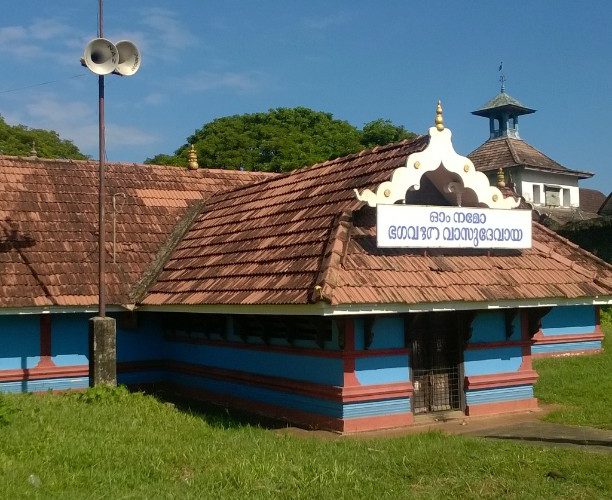
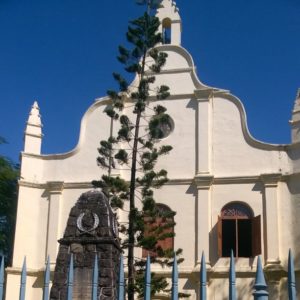
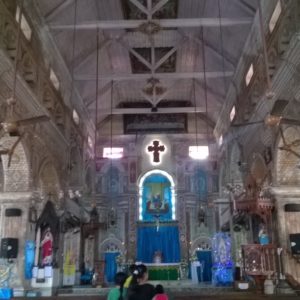
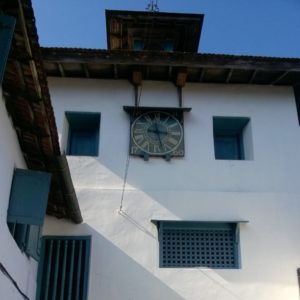
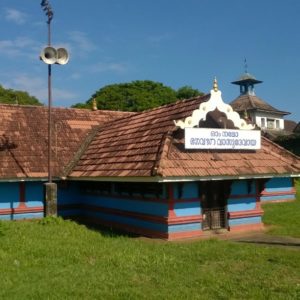
Nice virtual tour of Fort Kochi. There are very few Jews left there now. Sad. They had added a unique flavour to the place.
Thank you Matheikal! I too was disappointed. Within India, a lot of these distinct flavours and characters are getting lost…falling prey to mindless construction and general laziness of the govts